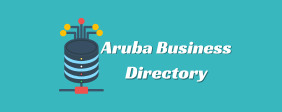Benchmarking against flagship companies is nothing new and, when it comes to choosing a technology stack, it might actually be more helpful than you’d think. However, most of the time the people writing about this topic tend to focus more on what’s trending at the time, leaving some crucial and baseline technologies off the spotlight. This is the case of PHP.
Even though the tech stacks at the enterprise level continue to increase in complexity every day, PHP has managed to stay relevant as a top choice for big projects that require a robust end-to-end infrastructure. Most of the companies we’ll talk about today even prefer to outsource PHP development to guarantee the scalability and cost-effectiveness of their projects.
Let’s take a closer look.
1. Facebook
We all know about Facebook. Its 1.5 billion country email list active users have forced it to become an indisputable leader in system scalability and creative IT infrastructure solutions. But what most people don’t know is that their expertise in the field comes from a long-time relationship with PHP, which Facebook has used to generate dynamic content since the company was born in 2004.
Not only was the original source code for Facebook written in PHP, but they also introduced HipHop for PHP a few years later. For those unaware, HipHop was a major transpiler that took PHP source code and compiled it into C++ machine code. Shortly after, Facebook also released the HipHop Virtual Machine, an open-source VM that greatly improved the performance of PHP applications and made the deployment process easier overall.
Today, PHP and its HipHop implementations remain as a core element of Facebook’s backend infrastructure. The HHVM, in particular, has served as a great aid to boost the development of PHP applications and continues to play a major role in PHP7.
2. Wikipedia
As one of the most visited public information sites in the world, Wikipedia values the reliability of its IT infrastructure over everything else. The how to create an ad on pinterest ads? site originally ran on UseModWiki, a general-purpose wiki script written in Perl. This was in 2003, a time when their database was just 4GB (can you imagine?). However, the company knew that number would grow exponentially in no time at all. By April 2004, their database was already growing 1.4 GB per week.
That’s why PHP came into play shortly after with Phase II software, which was completely overhauled a few months later by MediaWiki. According to Wikipedia, most of the code of MediaWiki uses PHP7. As an interesting fact, in 2014 Wikipedia also adopted Facebook’s HHVM, which helped them achieve almost twice the loading performance of their site.
3. WordPress
At this point, it should come as no surprise australia cell numbers that the largest content management system in the world also uses PHP. The 455+ million websites hosted on WordPress (which amount to an astounding 43% market share of all websites in existence) rely heavily on the dependability, speed, and security of the platform.
While no WordPress user needs to know anything about PHP to actually use the service, its entire architecture was built on PHP and later paired with MySQL and MariaDB. WordPress uses PHP to establish a robust link between its users’ webpages and the WP database. This way, the HTML output at the client-side can be rapidly and safely requested in WordPress’s server-side.
This has allowed millions of businesses and web developers to create a massive array of templates, plugins, and customizable UI components with little to no coding knowledge. And, by the way, the relationship between WordPress and PHP is still evolving rapidly, as the company continues to invest in new initiatives that generate all-around improvements based on PHP.
